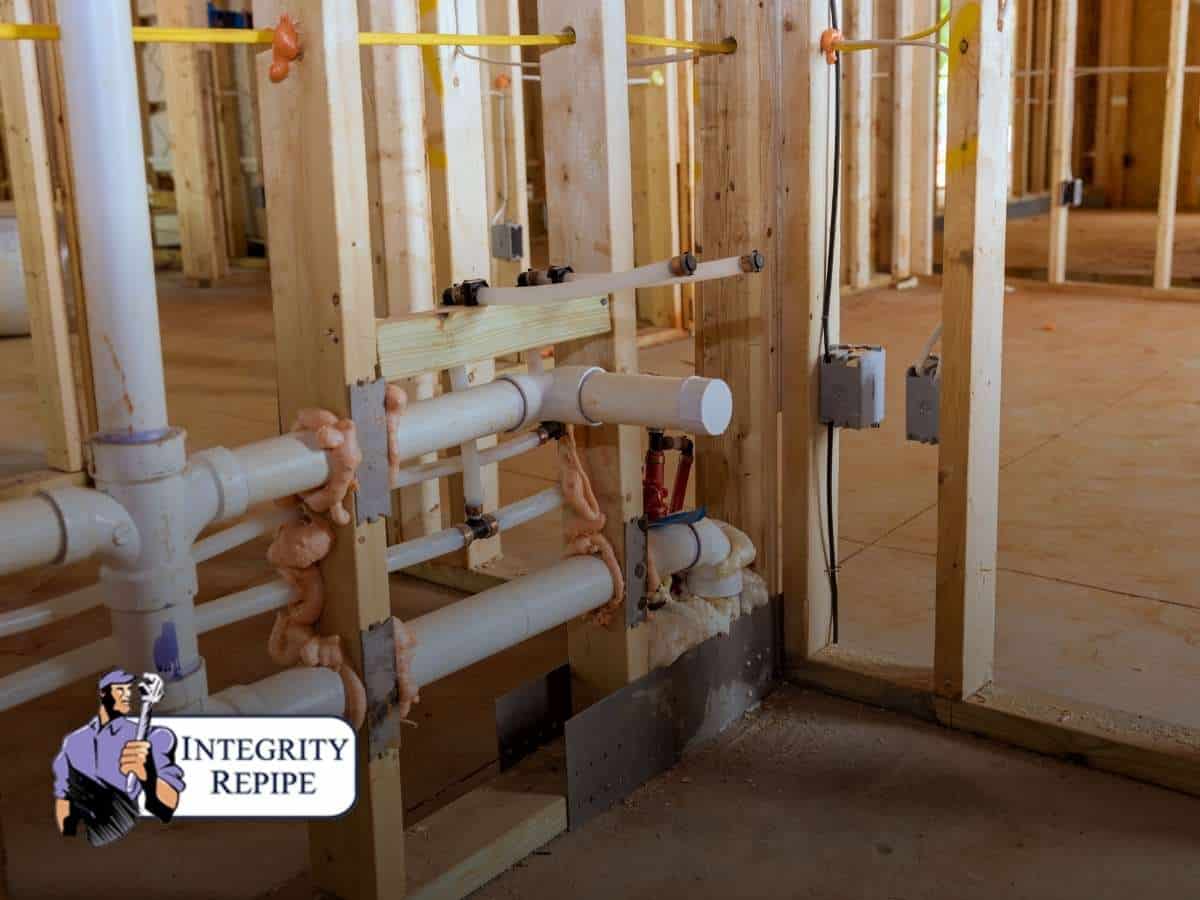The size of the water line for 1000 feet depends on the water demand and friction loss. Choosing the correct size for a main water line typically ranges from ¾” to 1” based on demand and friction loss.
It is crucial to accurately calculate the water supply fixture units required in the facility and estimate the demand to size the pipe accordingly. Utilizing charts for determining water pipe and meter sizes, understanding flow rate considerations, and analyzing the fixture branch pipe sizes are essential for optimal water supply.
Properly sizing the water lines is critical to ensure efficient water distribution and meet the demand without compromising pressure or flow. In addition to these considerations, the type of material used, such as PVC or copper, also plays a crucial role. Rural water supply lines may necessitate a different approach compared to urban settings, further emphasizing the importance of accurate sizing. Consequently, employing a water supply line size calculator and understanding the procedure for sizing water supply lines are vital for ensuring a functional and reliable water distribution system.
Sizing Factors For Choosing The Right Water Line
Considerations for Water Line Sizing: When determining the appropriate water line size for a 1000-foot distance, it is crucial to estimate water demand accurately. Calculating the friction loss and performing pipe sizing calculations are vital factors in choosing the right water line. To begin, add up the total number of water supply fixture units (wsfu) required in the facility. Then, estimate the demand using the table from the IPC that correlates wsfu to expected demand. Finally, size the pipe using demand vs. friction loss curves found in the IPC charts. This will ensure the selection of an optimal water line size to meet the required demands and minimize friction loss over the 1000-foot length.
Selecting The Appropriate Pipe Material And Size
Selecting the appropriate pipe material and size for a 1000 feet long-distance water line is crucial. Different pipe materials offer various benefits such as durability, flexibility, and resistance to corrosion. When considering the pipe size options for such a water line, factors like flow rate, pressure, and friction loss need to be taken into account. Calculating the suitable pipe size involves considering the total number of water supply fixture units required in the facility and estimating demand using relevant tables. The sizing of the pipe is determined by comparing the demand with friction loss curves found in the relevant charts and references. Consider consulting a professional to make the best choice for your specific project.
Best Practices For Water Line Installation And Maintenance
Proper Installation Techniques for Long Water Lines: When installing long water lines over a distance of 1000 feet, it is crucial to utilize proper installation techniques. This includes ensuring the trenches are adequately dug to accommodate the water line, and using appropriate support and bedding materials to prevent movement and damage. Moreover, the use of high-quality piping material that can withstand the extended distance is essential to maintain structural integrity.
Maintenance Tips for Extended Water Lines: To ensure the longevity and efficiency of extended water lines, regular maintenance is imperative. This involves periodic inspections for any signs of leaks or corrosion, as well as implementing protective measures such as corrosion-resistant coatings. In addition, maintaining consistent water pressure and flow through the installation of appropriate valves and pressure regulators is crucial for optimal performance.
Ensuring Efficiency and Durability in Water Line Systems: Efficiency and durability in water line systems can be achieved through meticulous planning, proper installation, and regular maintenance. By adhering to best practices and utilizing high-quality materials, water line systems can provide reliable and uninterrupted service over extended distances, ultimately ensuring the consistent and efficient supply of water.

Credit: www.integrityrepipe.com
Frequently Asked Questions Of What Size Water Line For 1000 Feet
How Do I Calculate Water Line Size?
To calculate water line size, tally the fixture units needed, estimate demand using the IPC table, and size the pipe using demand vs. friction loss curves. Aim for a ¾” to 1” main water line for most homes. For more precision, consult sizing charts and consider individual project requirements.
What Size Should My Main Water Line Be?
The size of your main water line should be ¾” to 1”. Determine demand based on the total fixture units. Then, refer to demand vs. friction loss curves found in the IPC charts to size the pipe. This calculation will ensure proper water supply to your property.
What Size Water Line Do I Need To Run 500 Feet?
For running 500 feet, you need a water line size of 1 to 1. 5 inches.
Is 2 Feet Deep Enough For Water Line?
Yes, 2 feet is generally deep enough for a water line, providing adequate protection from freezing temperatures. It’s important to follow local building codes and consider soil conditions.
Conclusion
Determining the right size for a water line over a distance of 1000 feet requires careful consideration of the water supply fixture units and the expected demand. By following the steps to size the pipe using the demand versus friction loss curves, the appropriate size of ¾” to 1” can be chosen for the main water line.
It’s crucial to consult relevant resources and professionals to ensure the proper sizing for a plumbing project.

